What is Saba サバ 【鯖】?
Saba is a general term for a group of fish, belonging to the mackerel family. The predominant part of the fish with saba in their name belongs to the tribe of "true mackerels".
Traditionally, the term refers to chub mackerel which is referred to in Japanese as masaba (マサバ). In the culinary context, the term saba includes not only chub mackerel but also its relatives such as the Australian mackerel and Atlantic mackerel.
Saba Sushi
Mackerel
Nutrition Facts Search Images on Flickr.com
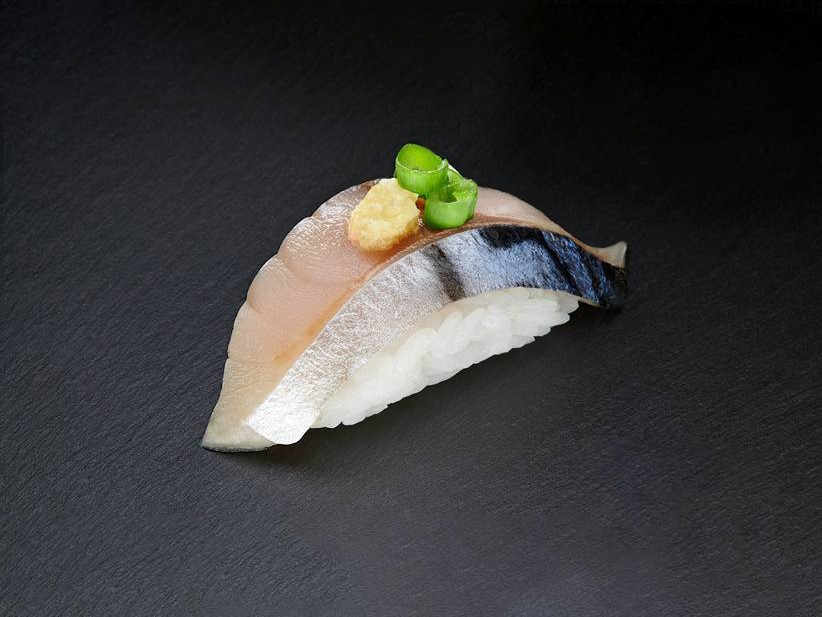

Saba for Sushi and Sashimi
In Japanese cuisine there are different ways of preparing saba sushi. The most common variant today is marinated mackerel (shime saba) as hand-shaped nigiri sushi. In Japan, saba is also commonly used to prepare pressed sushi (oshizushi, 押し寿司, hakozushi, 箱寿司, bō-zushi, 棒寿司).
Nearly 100% of the total international catch comes from wild stocks [FishStatJ, 2021]. Wild fish generally carry a high risk of being infected with a parasite that is harmful to humans. For this reason, saba must be properly frozen if it is to be eaten raw (as sushi or sashimi). Curing and marinating using the sujime method may partially reduce parasite infestation, but it does not eliminate the risk of infection entirely. Aquaculture farms exist in Japan where saba are farmed that are free of those parasites.
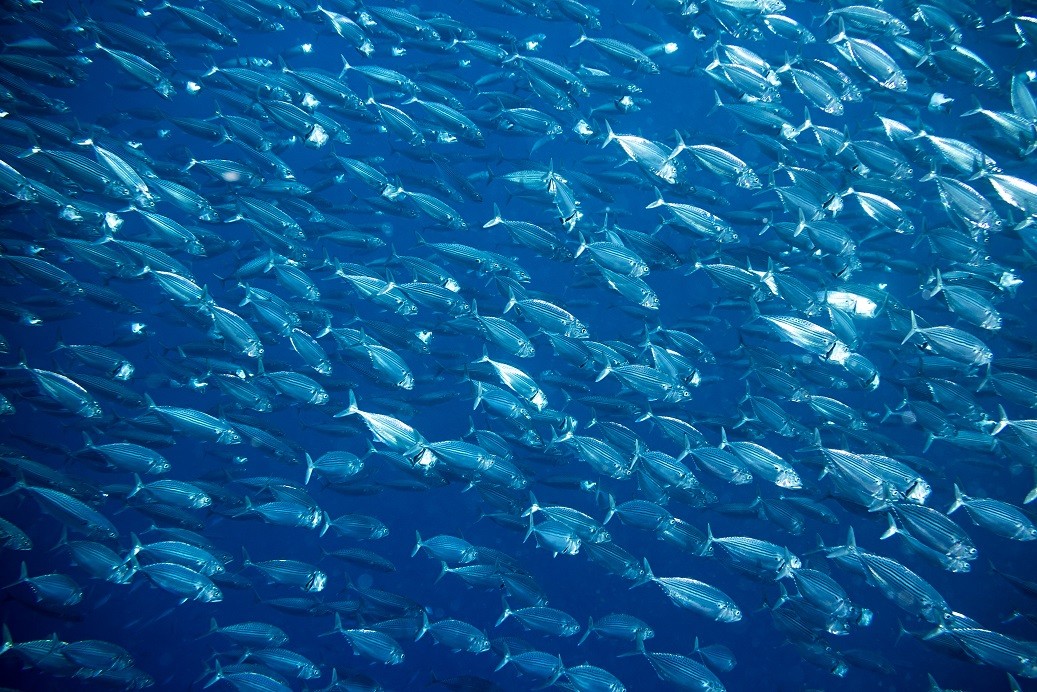
Shime Saba (シメサバ)
The sujime method is used to preserve freshness, suppress odors and reduce the dominant inherent flavor of saba. The meat treated in this way is called shime saba and is the conventional way to prepare saba for sushi or sashimi.
"At sushi restaurants in Tokyo, chefs normally leave the inside semi-raw, but I pickle it all the way through, much like kizushi (pickled sushi) from Kansai."
Jiro Ono in Sushi Chef: Sukiyabashi Jiro (Satomi, 2016)
Shime saba is very tasty and its aromas range from a refreshing acidity, a slightly sweetish fish taste to salt and minerals. The texture of the meat is pleasantly soft and fluffy, so that it falls apart easily on the tongue. Chopped spring onions, grated fresh ginger or grated winter radish (daikon) are very suitable as a garnish or topping.
Battera (バッテラ)
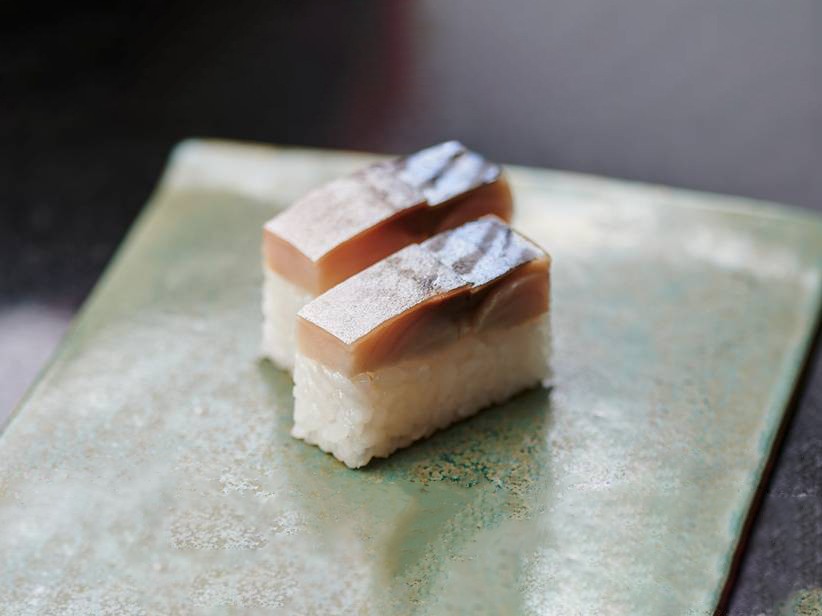
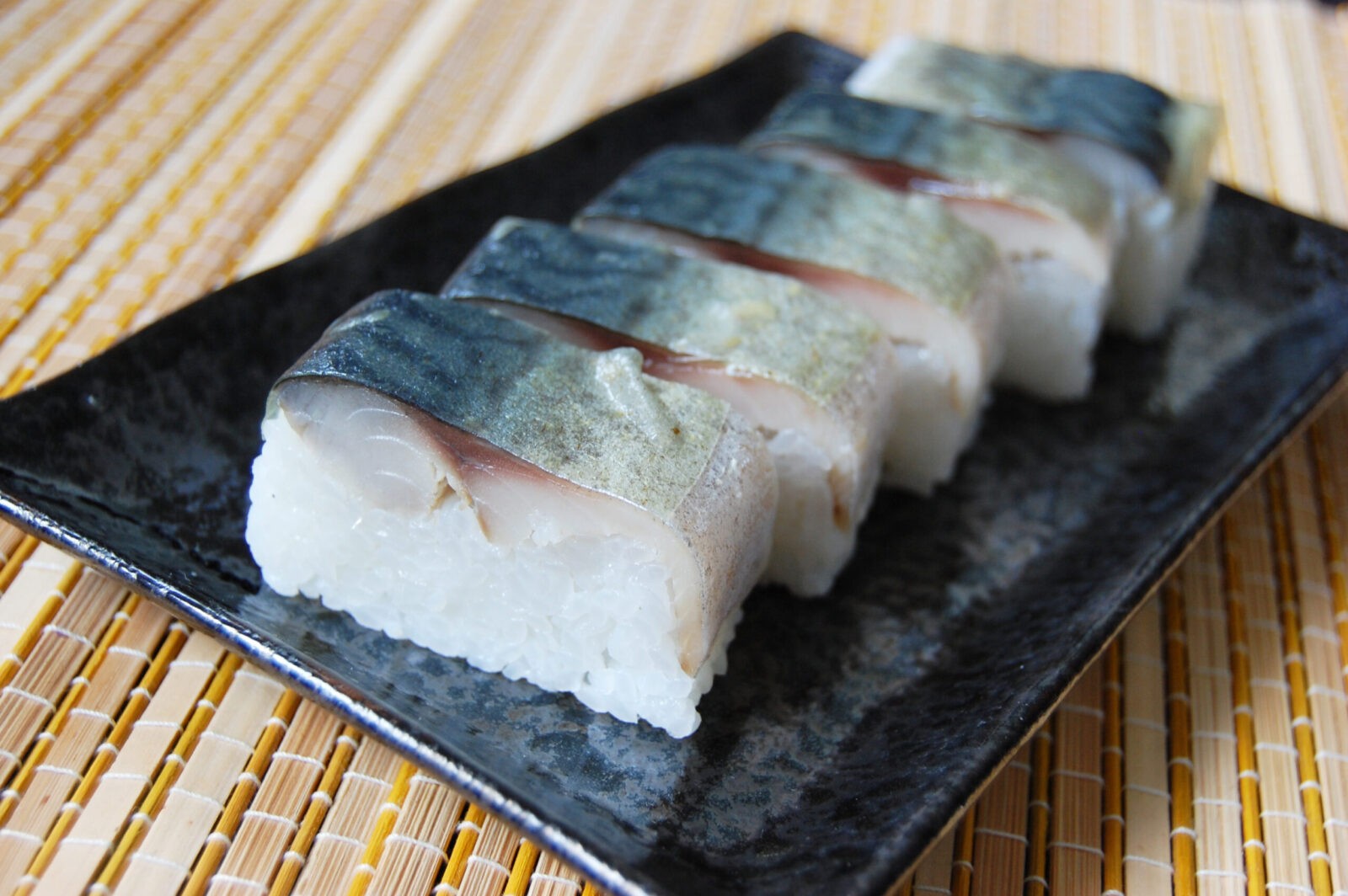
Pressed saba sushi is called battera sushi in the Kansai region. The name is borrowed from the Portuguese word “bateria” (meaning small boat) [Hosking, 2015]. This analogy goes back to the traditional method of preparation. Originally, the meat of the kohada or konoshiro was used to prepare battera sushi. Kohada is a small fish whose filleted meat is used whole length in one piece. Placed on rice, the fillet tapers towards the end and therefore resembles the shape of a boat [TBS, 2018].
Battera sushi is prepared in a special square wooden box (oshizushihako, 押し寿司箱), in which sushi rice is pressed with mackerel pickled in vinegar and topped with a translucent thin slice of white seaweed (shiraita kobu, 白板昆布). The white seaweed serves primarily to keep the meat from drying out. In addition, the umami flavors of the seaweed have a positive effect on the overall taste. For the preparation of battera, smaller or slimmer mackerel are preferred. In the process, the fillets are halved or quartered as needed.
Matsumae Sushi (松前寿司)
The term Matsumae refers to a southern region of Hokkaido in northern Japan. The seaweed harvested in this area is accordingly called Matsumae seaweed. Matsumae sushi in its broadest sense refers to any sushi dish wrapped with this seaweed. In the narrower sense, which is the most common today, Matsumae sushi is prepared with saba. Since Matsumae sushi is not pressed into a box like battera, but is formed in bamboo or cloth, the shape is usually somewhat rounder.
Best Season
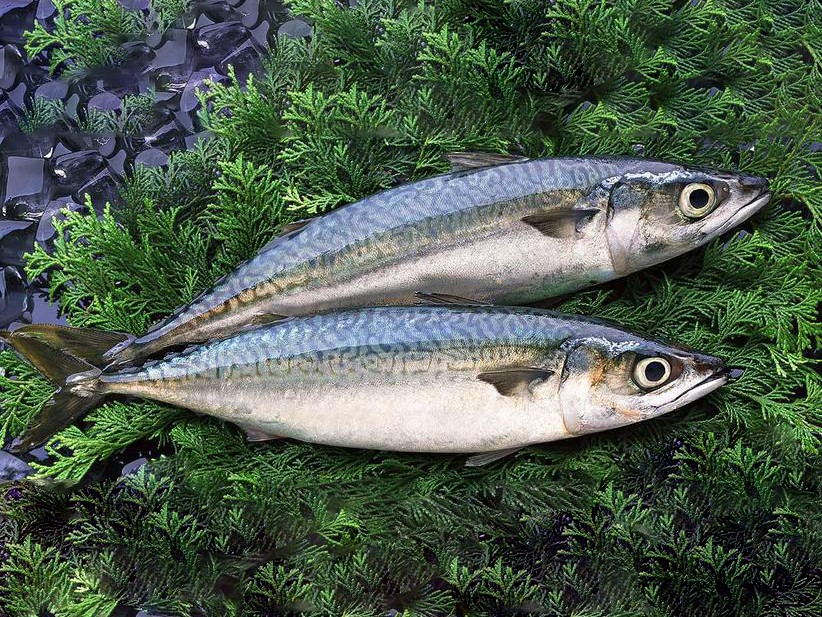
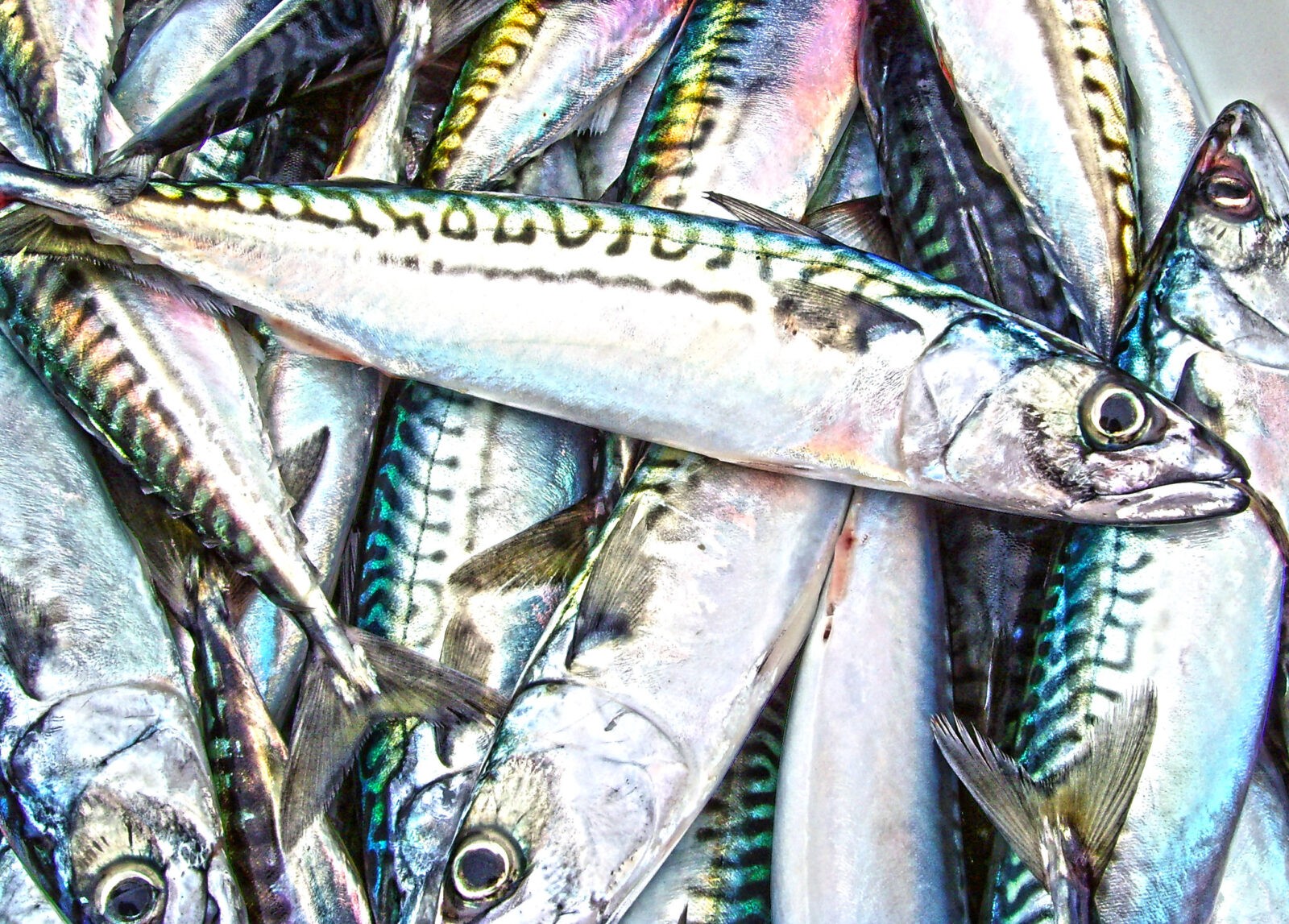
| Name | Jan | Feb | Mar | Apr | May | Jun | Jul | Aug | Sep | Oct | Nov | Dec |
|---|---|---|---|---|---|---|---|---|---|---|---|---|
| Atlantic mackerel 〚Taiseiyousaba〛 | ○ | ○ | ○ | ○ | ○ | ○ | ○ | ○ | ○ | ● | ● | ● |
| Chub mackerel 〚Masaba〛 | ○ | ○ | ○ | ○ | ● | ● | ● | |||||
| Blue mackerel 〚Gomasaba〛 | ● | ● | ○ | ○ | ○ | ○ | ○ | ○ | ○ | ○ | ● | ● |
- The best season for Japanese chub mackerel (masaba) is October to January. Animals from aquaculture are available in good quality until spring. At this time masaba is particularly rich in fat and full-bodied taste.
- The blue mackerel (gomasaba) spawns at different times depending on the population, so consistently tasty specimens can be found throughout the year. The main fishing season is considered to be the Australian summer [Sea-Ex, 2021].
- The spawning season of Atlantic mackerel depends on the habitat of the population, but is generally between spring and summer. The main fishing season runs from September to March, with its peak between September and December. The season when particularly tasty specimens can be caught is between autumn to early spring, when their fat content is at its highest (up to 30%) [NSC, 2021].
In other words: High quality tasty saba sushi and sashimi can be enjoyed all year round thanks to international trade. It only depends on the region where the mackerel was caught. In Japan, there is also the possibility to buy saba from smaller regional aquacultures throughout the year.
Mackerel caught between October and November are called “autumn mackerel” in Japan (aki saba, 秋サバ). If they are caught between December and February, mackerel are called “winter or cold mackerel” (samu saba, 寒サバ).
Absolute Freshness
The meat of mackerel contains high amounts of histidine, a semi-essential amino acid. This is broken down by microbiological or enzymatic processes within a short time after the death of the mackerel and histamine is formed. Sufficient cooling slows down the process, insufficient cooling after the catch leads to a strong increase in bacteria and thus to an increased histamine formation. The longer the spoilage of dark meat progresses, the higher the concentration of histamine. Histamine is toxic in higher concentrations, and even smaller amounts can cause symptoms of scombroid poisoning in humans.
Pickling and soaking in a salt and vinegar solution (sujime method) inhibits or slows down the increase in histamine concentration by denaturing the bacteria responsible for histidine decarboxylase. The acidic environment of the marinade inhibits the spread of the bacteria responsible for histidine decarboxylase. In addition, the low pH ensures that the proteins are denatured and the methylamine responsible for the fish taste is reduced. To ensure that ready-prepared saba sushi or sashimi can be consumed safely, it is important to use correctly treated mackerel that is as fresh as possible.
Saba in Japan
Archealogical excavations from the Jomon period prove that saba has been eaten in Japan since ancient times. The name saba was already used in early Japan, the meaning of which translated is "small tooth" and refers to the little teeth in the mouth of the mackerel.
Saba Trivia
Saba tastes most delicious in autumn because they have a lot of fat at this time. As with the autumn eggplants, a Japanese proverb says: “Autumn mackerel should not be eaten by your bride”. There are several interpretations and theories about the meaning of the proverb in Japan. These range from the idea that the mackerel could affect the health (of a future mother), to the fact that this advice comes from a jealous mother-in-law, to the fact that the high fat content could have a negative effect on the bride's figure.
Characteristics & Ecology
Mackerels are active and fast fish that are constantly on the move. They lack the swim bladder, which is characteristic for many fish and would allow them to swim in the water. In return, they are able to change the depth of the water quickly and easily, which makes it difficult for other predators to hunt them. As schooling fish they prefer coastal waters near the shelf edge with a depth of up to 200 meters. Mackerels feed mainly on plankton and fish larvae.
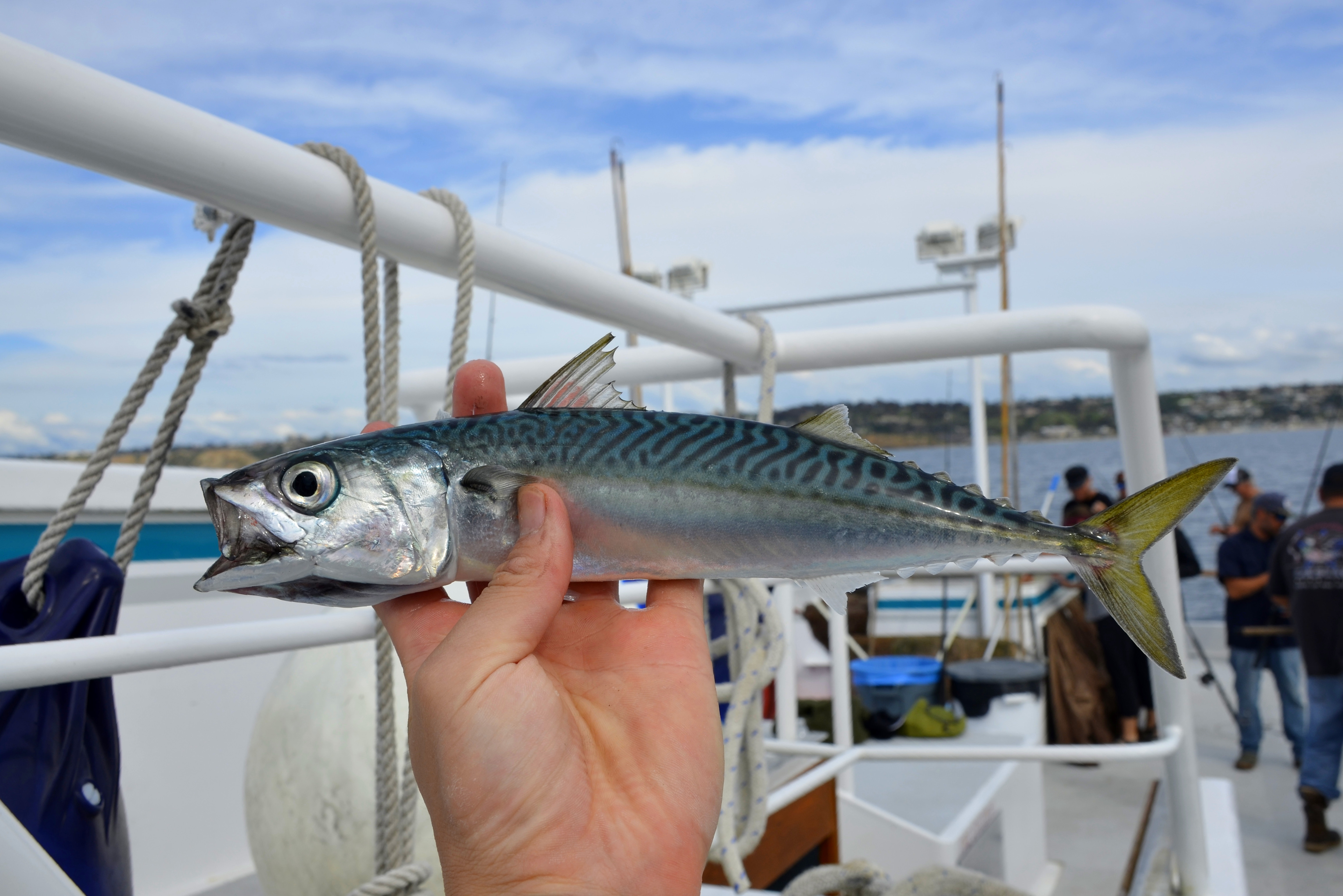
Masaba (Pacific Chub Mackerel)
The chub mackerel (masaba) is native to the warm and temperate zones of the Pacific and Indian Oceans. It is particularly common in the Japanese Sea and along the coasts of the Japanese archipelago.
Beside being called masaba it is also frequently called hon saba. Occasionally masaba is also called hirasaba, which translated means "flat mackerel" and serves as distinction to the blue mackerel, since its body is more round.
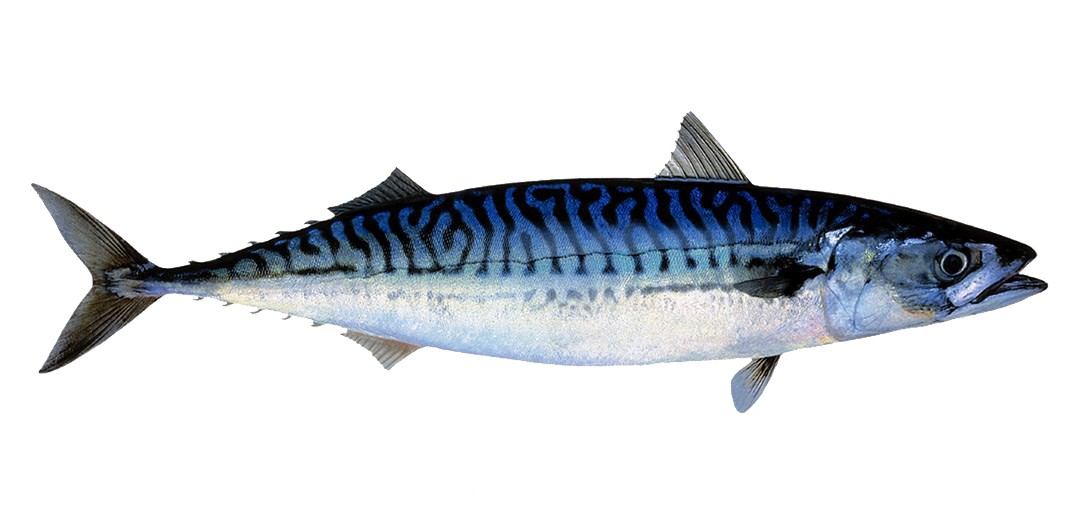
Gomasaba (Blue Mackerel)
The blue mackerel is native to the tropical and subtropical waters of the Pacific Ocean. It can be found from Japan to New Zealand, with smaller quantities also found off the coasts of the eastern Pacific and in the Indo-Pacific.
It carries the Japanese name gomasaba which translated means “sesame mackerel”. The name comes from the fact that the blue mackerel, unlike the chub mackerel, has many small dark spots on the lower body, which optically remind of black sesame.

Taiseiyousaba (Atlantic Mackerel)
The populations of the Atlantic mackerel, in the Japanese taiseiyousaba, have its natural habitat in the coast-waters of the North Atlantic, in the North sea, the Mediterranean and in the black sea.
For making masaba sushi or sashimi, the Atlantic mackerel serves as an excellent substitute. Its taste and fat content is comparable to that of Japanese mackerel.
Overview of the Most Important Types of Saba
| Japanese name | Common name | Economic significance |
|---|---|---|
| Gomasaba ゴマサバ | Blue mackerel Scomber australasicus | high |
| Masaba, honsaba, hirasaba マサバ, ホンサバ, 平サバ | Chub mackerel Scomber japonicus | high |
| Taiseiyousaba タイセイヨウサバ | Atlantic mackerel Scomber scombrus | high |
| Taiseiyoumasaba タイセイヨウマサバ | Atlantic chub mackerel Scomber colias | medium |
| Nijousaba ニジョウサバ | Double-lined mackerel Grammatorcynus bilineatus | low |
Economy
Mackerel is a very popular food fish and therefore of great economic importance. They are among the most fatty fish and are rich in valuable omega-3 fatty acids. Mackerel are mainly fished with trawls and purse seines, small quantities are caught annually with gill nets and lines. According to IUCN (International Union for Conservation of Nature), "real mackerels" (Tribus Scombrini) are not considered endangered.
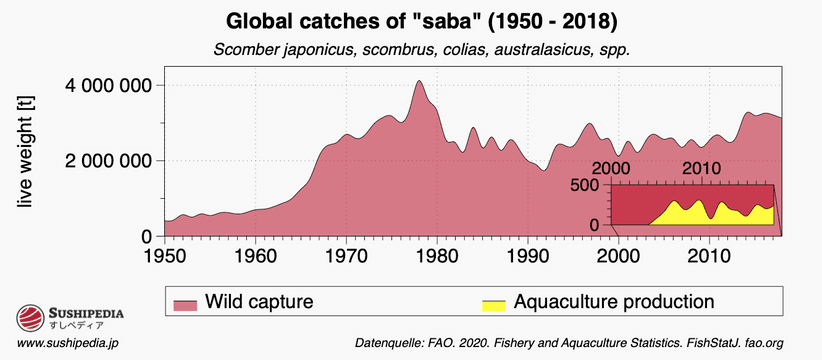
In 2018, according to the Food and Agriculture Organization of the United Nations (FAO), chub mackerel accounted for the largest share of the catch of fish of the genus Scomber (50%), followed by Atlantic mackerel (33%), whose three largest catching nations were Japan, China and Russia. The production share from aquaculture of 250 tons from South Korean production was remarkably low (0.01%).
Regional Brands of Saba in Japan
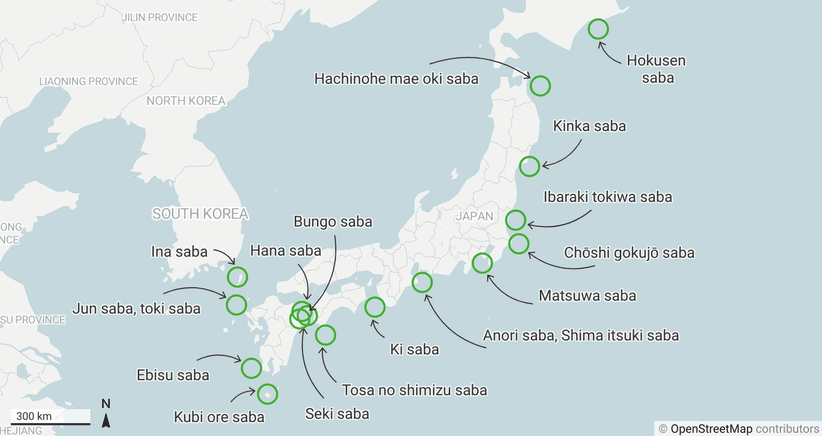
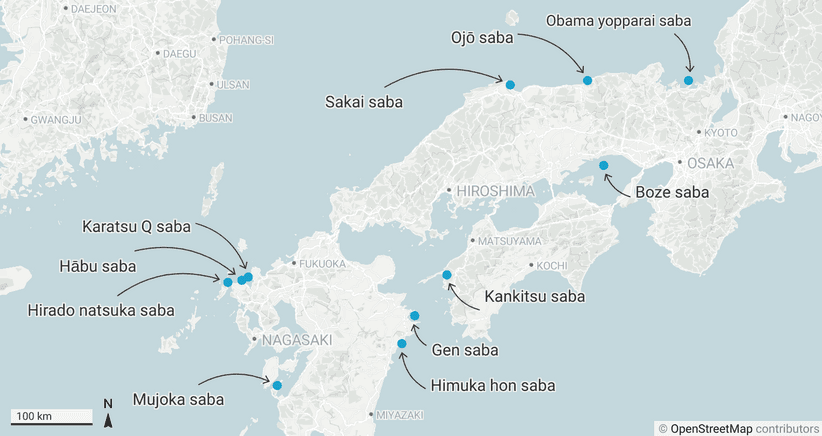
| Name | Type | Prefecture |
|---|---|---|
| Anori Saba, Shima Itsuki Saba あのりさば、志摩いつきさば | Natural | Mie |
| Boze Saba ばうぜ鯖 | Aquaculture sea-based | Hyogo |
| Bungo Saba 豊後さば | Natural | Oita |
| Chōshi Gokujō Saba 銚子極上さば | Natural | Chiba |
| Ebisu Saba 恵比寿さば | Natural | Kagoshima |
| Gen Saba 源さば | Aquaculture sea-based | Oita |
| Hābu Saba ハーブ鯖 | Aquaculture sea-based | Nagasaki |
| Hachinohe Mae Oki Saba 八戸前沖さば | Natural | Aomori |
| Hana Saba 岬サバ | Natural | Ehime |
| Himuka Hon Saba ひむか本サバ | Aquaculture sea-based | Miyazaki |
| Hirado Natsuka Saba 平戸なつ香サバ | Aquaculture sea-based | Nagasaki |
| Hokusen Saba 北釧鯖 | Natural | Hokkaido |
| Ibaraki Tokiwa Saba 茨城常磐マサバ | Natural | Ibraki |
| Ina Saba いなサバ | Natural | Nagasaki |
| Kankitsu Saba 柑橘サバ | Aquaculture sea-based | Ehime |
| Karatsu Q Saba 唐津Qサバ | Aquaculture sea-based, complete breeding | Saga |
| Kii Saba 紀さば | Natural | Wakayama |
| Kinka Saba 金華さば | Natural | Miyagi |
| Kubiore Saba 首折れ鯖 | Natural | Kagoshima |
| Matsuwa Saba 松輪さば | Natural | Kanagawa |
| Mujoka Saba むじょかさば | Aquaculture sea-based | Kagoshima |
| Obama Yopparai Saba 小浜よっぱらいサバ | Aquaculture sea-based | Fukui |
| Ojō Saba お嬢サバ | Aquaculture land-based, complete breeding | Tottori |
| Sakai Saba 境さば | Aquaculture sea-based, complete breeding | Tottori |
| Seki Saba 関さば | Natural | Ōita |
| Shun Saba, Toki Saba 旬さば・時さば | Natural | Nagasaki |
| Tosa No Shimizu Saba 土佐の清水さば | Natural | Kōchi |
Anori Saba, Shima Itsuki Saba 〖あのりさば・志摩いつきさば〗○
Anori saba or shima itsuki saba is fished off the Shima Peninsula (志摩半島) in Mie Prefecture. The coastal waters are considered particularly rich in nutrients due to the influence of the Kuroshio Current, the confluence of the Kiso River (木曽川) with Ise Bay (伊勢湾), and the narrow, long sea bays that penetrate deep into the land. Mackerel are migratory fish that can travel long distances in a short period of time. The mackerel off the Shima Peninsula are said not to leave their habitat. Due to the absence of large migrations, line-caught Anori mackerel are particularly rich in fat. In the fishing port of Anori, the fishing season lasts from April to December, peaking in September. [Hachimenroppi, 2017], [Yokohama Maruuo, 2017]
Boze Saba 〖ばうぜ鯖〗●
Boze saba originates from the Harima-nada (播磨灘) sea area, between Awajishima (淡路島) and Shōdoshima (小豆島) in the Seto Inland Sea. Landings and sales of boze saba occur in the town of Himeji, north off Boze Island (坊勢). From May to June, young mackerel are taken from the sea and then placed in net pens, where they continue to grow in their natural environment until autumn. By fall, they have nearly doubled in size. To achieve a balanced fat content, the animals are fattened without the use of compound feed. Regionally caught anchovies (katakuchīwashi, カタクチイワシ) are used as the main food by fishermen. Boze saba is considered popular among chefs because they are placed in land-based tanks just before they are sold. Boze saba therefore enjoys a special reputation for its freshness and quality. The Boze Fisheries Cooperative is considered a pioneer in the increasing farming of mackerel nationwide. [Kobayashi, 2019], [Himejisuishin, 2016]
Bungo Saba 〖豊後さば〗○
The origin of Bungo saba is the strait of Bungo (豊後水道), between the west coast of Shikoku and the east coast of Kyushu. It is marine area with fast currents, where the water masses of the western Seto Inland Sea and the Pacific Ocean meet. Tidal currents provide a nutrient-rich environment, which in turn gives rise to a large number of fish species. In this area, fishermen from the Oita Fisheries Association catch mackerel using purse seine fishing and transport them to net pens within the bay off Tsukumi (津久見市). From there, the mackerel are transported to land-based tanks to be shipped fresh or alive in purpose-built vehicles. [BLF, 2016]
Chōshi Gokujō Saba〖銚子極上さば〗○
In the port of Chōshi (銚子市), which is one of the most important fishing ports in Japan, it is mackerel season every year from mid-November. Particularly large specimens weighing more than 800 g are called chōshi gokujō saba there. Translated, this is understood as "Chōshi's best mackerel" and applies to only 1% of the mackerel landed there. The meat is exceptionally fatty and is considered very popular. [Shichibee, 2020]
Ebisu Saba 〖恵比寿さば〗○
Ebisu saba (金比羅丸の恵比寿さば) are blue mackerel (gomasaba) caught by fishermen of the Taaksui group in the waters southwest of Kyushu. After being caught, the mackerel are transported to tanks and not fed for a week before being sold. The food deprivation ensures that the intestines are emptied, that the fat content decreases and that the firmness of the meat increases. Ebisu mackerel are named after Ebisu-sama, who is worshipped as the god of the sea and maritime industry, as well as the god of prosperity. [Takasui, 2021], [Kuro, 2014]
Gen Saba〖源さば〗●
The sea off the coast of Kamae (蒲江) is rich in plankton and characterized by strong tidal currents. This environment provides a good habitat for breeding mackerel. Gen saba is a farmed mackerel raised by the Todaka Suisan company in Saiki City, within Oita Prefecture. Gen Saba is considered tasty and is characterized by a high fat content. By using a customized feed mixture, which is considered a trade secret, this allows the Todaka Suisan company to influence the taste of the mackerel to their liking. [Todaka, 2021]
Hābu Saba〖ハーブ鯖〗●
In Japan, mackerel is said to be tastiest when the fat content reaches its peak. Nagasaki hābu saba (ハーブ鯖) was born from the desire to offer the taste of this seasonally prized food all year round, in all four seasons. The Nagasaki hābu mackerel is raised on the coast off Matsuura (松浦市) and Sasebo (佐世保市), which have good environmental conditions, and fed with a food containing herbs. The herbal feed can be appropriately targeted to affect the color or flavor of the meat. According to the Nagasaki Hābu Saba Seisan Gurūpu, this mackerel can be obtained throughout the year. [NHSSG, 2017]
Hachinohe Mae Oki Saba, Gin Saba〖八戸前沖鯖・銀鯖〗○
Hachinohe mae oki saba translates as “mackerel from the coast off Hachinohe”. Only mackerel caught in the waters north of Sanriku (三陸海岸) and landed in the port of Hachinohe ( 八戸市) during a specified period bear this name. The exact time, usually from autumn to mid-winter, is determined each year by a committee. Hachinohe mackerel are considered particularly tasty, with a fat content of up to 30%. Specimens caught off the coast of Hachinohe weighing 550 g or more are also known as gin saba (銀鯖). [SBSKK, 2018]
Hana Saba 〖岬サバ〗○
The fishing grounds of hana saba are located at Cape Sada (佐田岬), the eastern side of the Hōyo Strait (豊予海峡). Cape Sada lies between the northern Seto Inland Sea (瀬戸内海) and the southern Uwakai Sea (宇和海). Tidal currents and inflowing nutrient-rich water provide good environmental conditions for mackerel and other species. For mackerel to be designated as hana saba, they must be landed at the Sadamisaki Peninsula fishing port (佐田岬半島) and exceed a certain weight limit. Hana mackerel, designated by the Misaki Fisheries Cooperative, are considered to be of very high quality and tasty, similar to seki saba. Hana saba is considered particularly tasty in winter (寒サバ). [Misakigyokyō, 2021], [Tkjbv, 2021]
Himuka Hon Saba 〖ひむか本サバ〗●
Off the coast of Kitaura town (北浦町) Himuka Hon Saba is farmed. Kitaura is a town with rich nature, located on the sea of Hyūga (日向海). The Kitaura Cooperative for Farmed Mackerel (北浦養殖マサバ協業体) began breeding mackerel back in 1999. The breeding is performed by capturing wild juveniles, which are then raised in net enclosures without the use of medications. The mackerel are not fed for at least seven days before shipment to allow their stomachs to empty. Through this procedure, it is intended that the quality of the meat will improve, as the deprivation of food makes their meat firmer and more balanced in fat content. As a farmed mackerel with a minimum weight of 400 g, himuka hon saba enjoys an excellent reputation and are traded at up to 2500 yen (≈22$) per kilogram . [Freshbrand, 2021], [Miyazakitegetege, 2015], [Nakanishi, 2021]
Hirado Natsuka Saba 〖平戸なつ香サバ〗●
In the waters of the city of Hirado (平戸) of Nagasaki Prefecture, the Hirado Natsuka mackerel is farmed. In addition to its fishery products, the Hirado region is also known for hirado natsuka (平戸夏香), an appreciated variety of citrus fruit. To improve the taste and smell of the meat, hirado natsuka is added to the feed of farmed mackerel. [Sakano, 2021]
Hokusen Saba 〖北釧鯖〗○
Hokusen saba (ほくせんさば) are fished off the coast of Kushiro City (釧路市) in Hokkaidō Prefecture. The meat is firm and characterized by a subtle sweetness. Hokusen mackerel have a balanced fat content, which is about 20%. The quantities landed each year are subject to major fluctuations. [Kushiro shinkō-kyoku, 2021], [Hokusen-Suisan, 2013]
Ibaraki Tokiwa Saba 〖茨城常磐マサバ〗○
Ibaraki tokiwa mackerel are fished off the coasts of the Tokiwa region (常磐) within Ibaraki Prefecture. The fishing season extends from autumn to early winter, while December is considered the peak. The large mackerel caught from autumn to winter are particularly tasty due to their fatty meat and firm texture. The Japanese mackerel (masaba) is fished in many parts of Japan, and Ibaraki Prefecture is among the areas with the highest catches in terms of quantity. There are 14 registered purse seine fleets in Ibaraki Prefecture, most of which are based at Otsu Fishing Port in Kitaibaraki City and Hasaki Fishing Port in Kamisu City. [Pridefish, 2021], [Ibarakishokusa, 2021]
Ina Saba 〖いなサバ〗○
The fishing port of Ina (伊奈) is located in the northwest of Tsushima (対馬), a remote island in Nagasaki Prefecture. It is a small, remote village with only a few residents. Since 2009, mackerel caught there by single-line fishing have been marketed under the name ina saba. Only mackerel that meet the strict standards of the Ina Fisheries Cooperative (伊奈漁業協同組合) are branded and shipped as Ina mackerel. It is a requirement that the mackerel are caught with single lines or fishing rods, chilled with ice for at least six hours after landing, have no injuries and are of a minimum size. Ina saba is in season from June to November, and the best time is considered to be from August to October. [Premium Water, 2021], [Hachimenroppi, 2016]
Kankitsu Saba 〖柑橘サバ〗●
Ehime Prefecture is considered one of the most important centers of the fishing industry in Japan. The Konishin Company (コニシン) farms mackerel there in the waters off the town of Yawatahama (八幡浜市), known as kankitsu saba. Kankitsu mackerel are fattened with a feed to which the peels of onshu mandarins (温州蜜柑), a popular citrus fruit of Ehime Prefecture, are added. Adding the fruit peels changes the taste and smell of the meat. The meat has a balanced fat ratio and is considered extremely tasty. [Hashimoto-Sengyo, 2019], [Konishin, 2015]
Karatsu Q Saba 〖唐津Qサバ〗●
The Karatsu Q Saba is a mackerel developed in a joint research project between Karatsu City (唐津市) in Saga Prefecture and Kyūshū University (九州大学). The breeding is conducted using a full-cycle aquaculture. This method does not harvest juvenile fish from their natural environment. Artificially hatched juvenile fish are raised for reproduction, and their offspring in turn produce a new generation. The use of full-cycle aquaculture Aquaculture not only preserves the natural stock, but also allows continuous control and quality assurance of the breeding cycle. By using special feeds throughout the life cycle, the risk of anisakis, a parasite harmful to humans, is significantly reduced. Karatsu q mackerel, unlike wild-caught mackerel, can therefore be eaten raw without fear of ansisakis. [Kyudai, 2014], [Karatsu-kankou, 2021]
Kii Saba 〖紀さば〗○
Between the Kii Peninsula and the main island of Honshū stretches the Kii Channel (紀伊水道). Where the waters of the Seto Inland Sea and Osaka Bay meet the Kuroshio Current (黒潮), there are pronounced tides. The mackerel caught there are known for their firm and tasty meat. Particularly large mackerel weighing 600 g or more, landed in Yura (由良町) and Yuasa (湯浅町) city of Wakayama Prefecture, are allowed to be called kii saba. This requires the mackerel to be sorted immediately after landing and packed for shipment in boxes filled with purified seawater cooled to 0°C. [Kamome, 2021]
Kinka Saba 〖金華さば〗○
On the coasts of Mount Kinka (金華山), the ocean currents of the Kuroshio (黒潮) and Oyashio (親潮) meet. The waters are rich in food and characterized by strong tides. Freshly caught and large mackerel landed during the season from September to January and at the port of Ishinomaki (石巻市) may be called kinka saba. Kinka mackerel are prized for their fat content and for their firm flesh. [Hanazushi, 2020]
Kubi Ore Saba 〖首折れ鯖〗○
From Yukushima (屋久島), an island south of the Osumi Peninsula in the southern part of Kagoshima Prefecture, comes kubi oresSaba. Kubi ore means “broken neck” and refers to a processing step after catching. Immediately after capture, the heads of those blue mackerel are jerked upward until the vertebrae between the trunk and head break. The fish is then placed in ice water, and the mackerel's last heartbeats pump any remaining blood from its body. The bleeding serves to keep the freshness longer. [Marutaka-Suisan, 2021]
Matsuwa Saba 〖松輪さば〗○
Matsuwa saba is a regional brand name for mackerel caught in Ena Bay (江奈湾) near Matsuwa. The village of Matsuwa is located south of Yokohama (横浜市) and is part of the city of Miura (三浦市) in Kanagawa Prefecture. Located at the southern tip of the Miura Peninsula, near the Tsurugisaki Lighthouse (剱埼灯台), is the Matsuwa branch of the Miura Fisheries Association. From here, mackerel are shipped all over Japan. Matsuwa saba are killed just before shipment or sale, thus ensuring maximum freshness. The mackerel caught with single lines in this area, are known as the “golden mackerel of Matsuwa” (松輪の黄金サバ) due to their meaty and fatty nature, and are highly prized as top quality mackerels. Given the high fat content, the meat has a cherry red color and is different from “ordinary” mackerel. [Matsuwa-shisho, 2013]
Mujoka Saba 〖むじょかさば〗●
In the north of Nagashima Island (長島), located in the inland sea of Lake Yatushiro (八代海), mujoka saba is farmed in net pens. The fast tides off Nagashima are responsible for the firmness and moderate fat content of the mackerel meat. Mujoka means “lovely“ or “sweet“ in the Nagashima dialect. Mujoka mackerel are either shipped live to regional restaurants by special transport vehicles or killed immediately before shipment. Thanks to exceptional freshness and constant weight of about 500 g, mujoka mackerels are considered popular among chefs. [Sarugaku-suisan, 2021]
Obama Yopparai Saba 〖小浜よっぱらいサバ〗●
In the past, the city of Obama (小浜市) in Fukui Prefecture (福井県) was considered a prestigious origin of wild-caught mackerel. Due to the steady decline in catch, the mackerel industry became less important. In an effort to revive the past, mackerel have been farmed in Obama since June 2016. The project was initiated by various stakeholders from industry, academia and government. Sake kasu (酒粕), a byproduct of alcohol production, is added to the feed of the obama yopparai mackerel. The use as a food additive positively affects the taste, as well as the smell of the meat. The fact that sake kasu is produced during the manufacture of a popular alcoholic beverage is why these mackerel are called “Obama's drunken mackerel” (obama yopparai saba). [Obama-fukui, 2019]
Ojō Saba 〖お嬢サバ〗●
Ojō saba are mackerel farmed in the fishing port of Iwami (岩美町), within Tottori Prefecture (鳥取県), by the company JR West Japan. Since Tottori has few bays suitable for conventional offshore sea farming, the Tottori Prefectural Farming and Fisheries Center began exploring commercial onshore mackerel farming in 2012. By use of subsurface-derived seawater, special feed, and artificial rearing of juvenile fish, it can be virtually ruled out that these mackerel are infested with a parasite that is harmful to humans. Ojō saba is therefore one of the few mackerel brands that can be safely consumed raw without prior freezing treatment or other measures. It takes about a year and a half for the mackerel to reach market maturity, and they reach a weight of about 300 grams. The fact that the mackerel is smaller and more delicate compared to wild-caught mackerel earned it the name “young lady mackerel“ (ojō saba). [Fumi Yata, 2021]
Sakai Saba 〖境さば〗●
At the northern end of the Yumigahama Peninsula (弓ヶ浜半島) lies the city of Sakaiminato (境港市) of Tottori Prefecture (鳥取県). There, in the waters of Miho Bay (美保湾), Yumigahama Fisheries has been conducting fully-cycle sea-based farming since 2016. In this “fully-cycle“ aquaculture, no juvenile fish are taken from the ecosystem. Artificially hatched juveniles are raised to reproduce into parent fish, whose offspring in turn produce a new generation. This process not only conserves natural stocks, but also significantly reduces the risk of infection with parasites harmful to humans. To ensure high quality, the Sakai mackerel, weighing about 350 g, are transported alive to processing plants or markets in special vehicles. [Minato-Shimbun, 2017], [Mizuki-shigeru, 2017]
Seki Saba 〖関さば〗○
The current of the Pacific Ocean supplies the Strait of Hoyo (豊予海峡) with nutrients vital to many species. The tides there provide an ideal environment for the species living there. In the Bungo Channel (豊後水道) converges, the warm sea water of the Pacific Ocean and the cold sea water of the Seto Inland Sea (豊予海峡). It is said that these ideal environmental conditions are responsible for the particularly tasty fish, whose fat content is balanced and whose flesh is firm. The strait of Hoyo is located in the narrowest part of the Bungo Channel, between Cape Sekizaki (関崎岬) of Oita City (大分市) and Cape Sada (佐田岬) of Ikata City (伊方町). Seki mackerel are caught by members of the Saganoseki Fishing Association using rods and lines (ippondzuri, 一本釣り) rather than nets. This type of fishing is not only more sustainable and selective, but also involves less risk of injury to the fish and less stress. They are then killed using the ikejime method, in which the fish are killed with as little stress as possible to preserve the quality of the meat. Seki mackerel enjoy an excellent reputation in the gastronomy and are traded at correspondingly high prices. Annually, in mid-March, Saganoseki hosts the Seki Aji and Seki Saba Festival. Here visitors can enjoy different mackerel dishes at special prices. [Fujimi-suisan, 2021], [Kisetsu-mimi, 2021]
Toki Saba, Jun Saba 〖時さば・旬さば〗○
Jun or toki saba are caught from October to February in the waters of the Goto Islands (五島列島) and Tsushima (対馬). Jun (旬) and also toki (時) in Japanese represent “the time of something“ or “something that is in season“. These names were chosen in 1997 as part of a public branding campaign aimed at raising awareness of the mackerel caught by the Japan Pelagic Purse Seine Fishing Cooperative (日本遠洋旋網漁業協同組合). Weighing more than 400 g, jun- or toki mackerel are rich in fat and considered tasty. [Nishinihon-sakanaichi, 2021], [Nagasaki-no-oishī, 2021]
Tosa No Shimizu Saba, Shimizu Saba 〖土佐の清水さば・清水サバ〗○
At the southernmost point of Shikoku is Cape Ashizuri (足摺岬), which is part of the Ashizuri-Uwakai National Park (足摺宇和海国立公園) and lies on the edge of Tosa Bay (土佐湾). In the fishing port of Tosashimizu town (土佐清水市), blue mackerel are landed, referred to as shimizu or tosa no shimizu saba. The mackerel from Tosashimizu are caught individually using a special fishing method called tatenawa gyohō (立縄漁法). In this process, lines equipped with dozens of hooks are lowered vertically into the sea and baited. Once aboard the fishing boat, the caught mackerel, which are still alive, are then manually removed from the line one by one and placed in a tank filled with fresh water. Upon arrival at the fishing port, the fish are quickly unloaded and transported to a tank. Before shipment, the mackerel spend one to two days there to recover from the stress of catching. Shimizu mackerel are then shipped alive in special transport vehicles to buyers and processing distributors. Due to their freshness and gentle catching methods, they are considered popular among chefs. [Kōchi-kankō, 2021], [Tosashimizu-shi, 2021]
- By including the species Grammatorcynus bilineatus, in Japanese called Nijousaba (ニジョウサバ), the restriction to the tribe of "real mackerels" (lat. Scombrini) is not applicable. ↩
- The U.S. Food and Drug Administration (FDA) and the European Commission require that all potentially parasitic fish intended for raw consumption be stored at an ambient temperature of -20°C (-4°F) or below for at least 7 days or frozen at -35°C (-31°F) or below until the meat has completely solidified and then stored for 15 hours (FDA 2020, Regulation (ec) No 853/2004). A common method used in the fishing industry today is the Individual Quick Freezing method (IQF). ↩
- "Blue Mackerel are serial spawners, spawning multiple times over a prolonged spawning season [...] Blue mackerel S. australasicus stocks spawn between spring andautumn off southern Australia and between winter and spring offeastern Australia. " (Rogers et al., 2009) ↩
- Nagasaki Prefecture is currently the most important region for cultivated saba in Kyushu. The herb mackerel from Nagasaki (Nagasaki hābu saba, 長崎ハーブ鯖) is a specialty whose food is enriched with herbs and therefore has a unique taste. The Karatsu-Q-mackerel (karatsu q saba, 唐津Qサバ) is a fully farmed mackerel developed through joint research by Karatsu City and Kyushu University. ↩
- Already the intake of about 100 mg histamine is sufficient to trigger a medium scombroid poisoning. The poisoning is characterized by symptoms such as reddening of the skin, abdominal pain, nausea, vomiting, headaches, diarrhea, shortness of breath and drop in blood pressure. (Sumner et al., 2004) ↩
- “Salting of fish in a saturated brine solution resulted in a constant histamine content in mackerel during drying.” (Azudin & Saari, 1990) ↩
- Methylamine and other amines are formed during the spoilage of fish and are responsible for the typical fish smell and taste (see McMurry, 1996). The fresher the mackerel meat was before preservation, the less pronounced the characteristic smell and taste. ↩
- The character for “something small” is 小 and can be read in Japanese Kun reading as sa (さ). The character 歯 stands for "tooth" and can be read in Kun as ha (は), which together with sa converts to ba (rendoaku emphasis). ↩
- In Japanese: Aki saba wa yome ni kuwa su na (秋鯖は嫁に喰わすな). The character 嫁 can stand for both bride and daughter-in-law. ↩
Video
銀座渡利. 【鮨】しめ鯖【握り方】と【バッテラ(押し寿司)】の作り方. 2020-08-03, youTube.com
Warnings
As a general rule, avoid eating ingredients that do not have labels for raw consumption.
| The meat, especially that of wild-caught specimens, may be infested with parasites that cause infectious diseases. Infection can be avoided if the raw meat has been adequately frozen. Pickling and soaking in salt or vinegar solution is not sufficient to eliminate the parasites. If the product has been farmed, only raw unprocessed seafood from production facilities whose products are approved for raw consumption should be consumed.Warning source | |
| The naturally have high levels of enzymes causes the meat to let it rot quickly. It is therefore essential to maintain an appropriate cold chain until prompt processing. Histamine is not destroyed by normal cooking temperatures, so even properly cooked fish can still result in poisoning.Warning source |
References & Further Reading
A
[Azudin & Saari]: Mohd. Nasir Azudin, Nazamid Saari. Histamine Content In Fermented And Cured Fish Products in Malaysia, Papers Presented at the Seventh Session of the Indo-Pacific Fishery Commission Working Party on Fish Technology and Marketing: Bangkok, Thailand, 19-22 April 1988. Indo-Pacific Fishery Commission. Working Party on Fish Technology and Marketing, Food and Agriculture Organization of the United Nations (FAO), Rome. 1990
B
[BLF, 2016]: 豊後のあじ、豊後のさばについて. 有限会社 豊後活魚. 2016. Retrieved online on: May 14, 2021: http://www.bungo-katugyo.com/about/
E
[EP, 2004]: The European Parliament And The Council Of The European Union. Regulation (ec) No 853/2004 Of The European Parliament And Of The Council of 29 April 2004, Laying down specific hygiene rules for on the hygiene of foodstuffs, The European Parliament And The Council Of The European Union. The Publications Office of the European Union, Luxembourg. 2004. Retrieved online on: December 26, 2020
F
[FAO FishstatJ, 2020]: Fisheries and Aquaculture Department. Fishery and Aquaculture Statistics. Global production by production source 1950-2018 (FishstatJ). Food and Agriculture Organization of the United Nations (FAO), Rome. 2020. Retrieved online on: December 24, 2020
[FDA, 2020]: U.S. Department of Health and Human Services Food and Drug Administration Center for Food Safety and Applied Nutrition. Fish and Fishery Products Hazards and Controls Guidance. 2020
[FishStatJ, 2021]: Fisheries and Aquaculture Department. Fishery and Aquaculture Statistics. Global production by production source 1950-2019 (FishstatJ). Food and Agriculture Organization of the United Nations (FAO), Rome. 2021. Retrieved online on: May 12, 2021
[Freshbrand, 2021]: ひむか本サバ. 宮崎のさかなビジネス拡大協議会. Retrieved online on: May 20, 2021: http://www.freshbrand.jp/brands/himukahonsaba/
[Fujimi-suisan, 2021]: 関さば・関あじ(関サバ)(関アジ)について. 富士見水産 佐賀関支店 姫野まで. Retrieved online on: June 18, 2021: http://www.sekisaba.co.jp/about/
[Fumi Yata, 2021]: 矢田文. 生で食べられるマサバ「お嬢サバ」 岩美町で陸上養殖. 朝日新聞デジタル、大阪市. 2021. Retrieved online on: June 18, 2021: https://www.asahi.com/articles/ASP3J6S3YP2TPUUB007.html
H
[Hachimenroppi, 2016]: 本日のご案内は、長崎県対馬産の「伊奈サバ(いなさば)」です。. Hachimenroppi Inc., Tokyo. 2016. Retrieved online on: May 26, 2021: https://hachimenroppi.com/recommend/details/20160809_inasaba/
[Hachimenroppi, 2017]: あのりさば。本日のご案内は、伊勢志摩安乗産の「あのりさば」です。. Hachimenroppi Inc., Tokyo. 2017. Retrieved online on: May 18, 2021: https://hachimenroppi.com/recommend/details/147/
[Hanazushi, 2020]: そもそも金華鯖ってどんな鯖?. 華ずし. 2020. Retrieved online on: June 01, 2021: https://www.hanazushi.com/blogs/contents/kinkasaba
[Hashimoto-Sengyo, 2019]: みかんサバ???. 橋本鮮魚本店. 2019. Retrieved online on: May 26, 2021: https://hashimoto-sengyo.co.jp/archives/1
[Himejisuishin, 2016]: ぼうぜ鯖の本格的な出荷が始まります. 姫路市広報推進員, hsuishin.exblog.jp. 2016. Retrieved online on: May 14, 2021: https://hsuishin.exblog.jp/26096294/
[Hokusen-Suisan, 2013]: 最高級一夜干し北釧鯖(サバ) かにと言えば北釧水産. カネキタ北釧水産株式会社。Hokusen Suisan Publishing Inc.. 2013. https://www.hokusen.co.jp/oce_gyokai/ichiyabosi_saba.htm
[Hosking, 2015]: Richard Hosking. A Dictionary of Japanese Food: Ingredients & Culture. Tuttle Publishing, North Clarendon. 2015
I
[Ibarakishokusa, 2021]: 絶妙な脂の乗りと身の締り 茨城常磐の「マサバ」. 茨城をたべよう いばらき食と農のポータルサイト。茨城県営業戦略部販売流通課. Retrieved online on: May 26, 2021: https://www.ibaraki-shokusai.net/season/fish/masaba/
K
[Kamome, 2021]: 紀さば. kamome.club 電車で釣り♪。. Retrieved online on: June 01, 2021: http://kamome.club/zukan_general/gnl.php?id=3207b70f51b583141c42aa5cf4a17f21b29b2b09
[Karatsu-kankou, 2021]: 「唐津Qサバ」って...?. 一般社団法人唐津観光協会. Retrieved online on: June 01, 2021: https://www.karatsu-kankou.jp/feature/q-saba/
[Kisetsu-mimi, 2021]: 豊後水道の旬の魚 とは?魚のランクまとめ!関さば祭りは3月に開催?. 季節の耳より情報局. Retrieved online on: June 18, 2021: http://www.sekisaba.co.jp/about/
[Kobayashi, 2019]: 小林良多. 食通もうなる「ぼうぜ鯖」今年は豊漁 出荷ピーク 姫路. 神戸新聞社 (Kobe Shimbun). 2019. Retrieved online on: May 14, 2021: https://www.kobe-np.co.jp/news/odekake-plus/news/detail.shtml?news/odekake-plus/news/gourmet/201911/12877501
[Kōchi-kankō, 2021]: 【冬の食材】 土佐の清水さば. 高知県観光コンベンション協会, Kochi Visitors & Convention Association. Retrieved online on: June 20, 2021: https://www.attaka.or.jp/kanko/gourmet_dtl.php?ID=12458
[Konishin, 2015]: 広告素材。柑橘由来ポリフェノールが肉質改善!. 株式会社 コニシン
[Kuro, 2014]: 黒笹舟 (Kuro sasabune). 目新しいブランド「恵比寿さば」 (New brand "Ebisu mackerel"). ameblo.jp. 2014. Retrieved online on: May 10, 2021: https://ameblo.jp/mrsasabune/entry-11950571289.html
[Kushiro shinkō-kyoku, 2021]: 釧路産 サバ. 釧路総合振興局. Retrieved online on: June 10, 2021: http://www.kushiro.pref.hokkaido.lg.jp/ts/tss/navi/umi/kushirosaba.html
[Kyudai, 2014]: 九州大学 (Kyushu University). 新水産資源創出プロジェクト進捗報告会を開催 ―「マサバの完全養殖」商品化に向けて、PRESS RELEASE(2014/09/18). 2014
M
[Marutaka-Suisan, 2021]: 屋久島の首折れサバのご紹介. 有限会社丸高水産. Retrieved online on: June 10, 2021: https://marutaka-suisan.net/kubioresaba.html
[Matsuwa-shisho, 2013]: みうら漁業協同組合 松輪支所. サバの最高級品!. みうら漁業協同組合 松輪支所. Retrieved online on: October 24, 2013: http://www.matsuwa.ecnet.jp
[McMurry, 1996]: John McMurry. Organic Chemistry. Brooks/Cole Publishing Company, Pacific Grove. 1996
[Minato-Shimbun, 2017]: 境さば」今期23万尾計画 日本水産子会社・弓ヶ浜水産 『養殖サバ特集』. 株式会社 みなと山口合同新聞社. 2017. Retrieved online on: June 18, 2021: https://www.minato-yamaguchi.co.jp/minato/e-minato/articles/73380
[Misakigyokyō, 2021]: どんな魚が穫れるの?. 三崎漁協. Retrieved online on: May 20, 2021: https://misaki.or.jp/siki.html
[Miyazakitegetege, 2015]: 刺身で食べて欲しい、とろける脂のうま味「ひむか本サバ」. 宮崎てげてげ通信. 2015. Retrieved online on: May 20, 2021: https://visit.miyazaki.jp/?p=23130
[Mizuki-shigeru, 2017]: 境さば出荷本格化警活魚のほか加工品も美保湾。超限定【境さば】の出荷が始まりました!. 水木しげるロード 妖怪神社スタッフのブログ. 2017. Retrieved online on: June 18, 2021: http://blog.livedoor.jp/youkaijinjya/archives/51532688.html
N
[Nagasaki-no-oishī, 2021]: 長崎旬さば. 長崎の美味しい食べ物. Retrieved online on: June 19, 2021: http://nagasaki-gourmet.com/tokisaba.html
[Nakanishi, 2021]: 中西茂広. ひむか本サバ 鮮魚. おちゃのこネット. Retrieved online on: May 20, 2021: https://kanewoto.ocnk.net/
[NHSSG, 2017]: ハーブ鯖とは?. 長崎ハーブさば生産グループ. 2017. Retrieved online on: May 18, 2021: http://www.nagasaki-herbsaba.jp/
[Nishinihon-sakanaichi, 2021]: 旬あじ(ときあじ)・旬さば(ときさば)を知る. 西日本魚市株式会社. Retrieved online on: June 19, 2021: http://www.nishiuo.co.jp/knowledge.html
[NSC, 2021]: Fisch aus Norwegen: Makrele. Die Makrele – ein Energiespender.. Norwegian Seafood Council. 2021. Retrieved online on: May 11, 2021: https://fischausnorwegen.de/fisch-aus-norwegen/makrele/
O
[Obama-fukui, 2019]: 小浜よっぱらいサバの魅力. 小浜市産業部農林水産課. 2019. Retrieved online on: June 18, 2021: https://www1.city.obama.fukui.jp/obm/yopparaisaba/
P
[Premium Water, 2021]: <お気軽コース> シェフたちが続々指名買い。研究者から漁師になった銭本慧さんの「伊奈のマサバ」. Premium Mall, PremiumWater Co., Ltd. Retrieved online on: May 26, 2021: http://mall.premium-water.net/owners_item30.html
[Pridefish, 2021]: 全国漁業協同組合連合会. 茨城常磐のまさば. pride-fish.jp. Retrieved online on: May 10, 2021: http://www.pride-fish.jp/JPF/pref/detail.php?pk=1446616069
R
[Rogers et al., 2009]: Paul J- Rogers, Timothy Mark Ward, Lachlan Mcleay, Michael Lowry. Reproductive biology of blue mackerel, Scomber australasicus, off southern and eastern Australia: Suitability of the Daily Egg Production Method for stock assessment. Marine and Freshwater Research Vol. 60 (2). CSIRO Publishing, Melbourne. 2009. https://www.publish.csiro.au/mf/MF07158
S
[Sakano, 2021]: 平戸なつ香サバ. 有限会社 坂野水産. Retrieved online on: May 26, 2021: http://hiradoshop.jp/?pid=150859610
[Sarugaku-suisan, 2021]: 長島の若手漁師が丹精込めて育てた新しいブランドサバ. 活魚のさるがく水産. Retrieved online on: June 11, 2021: https://sarugaku-suisan.com/products/mujyokasaba.html
[Satomi, 2016]: Shinzo Satomi. Sukiyabashi Jiro. Vertical Inc., New York. 2016
[SBSKK, 2018]: 八戸前沖さばの豆知識. 8saba.com。八戸前沖さばブランド推進協議会. 2018. Retrieved online on: May 18, 2021: https://www.8saba.com/
[Sea-Ex, 2021]: Commercial Fishery for Blue Mackerel (Scomber australasieus). Labiche Corporation Pty Ltd., Bracken Ridge. Retrieved online on: May 11, 2021: https://www.sea-ex.com/fishphotos/slimey_mackerel-blue-mackerel-fishery.htm
[Shichibee, 2020]: 銚子極上さば料理祭りとは. 七兵衛, shichibee.com. 2020. Retrieved online on: May 14, 2021: https://www.shichibee.com/sabafes
[Sumner et al., 2004]: John Louis Sumner, Thomas Ross, Lahsen Ababouch. Application of Risk Assessment in the Fish Industry. Food and Agriculture Organization of the United Nations (FAO), Rome. 2004
T
[Takasui, 2021]: タカスイのこだわり。「恵比寿あじ」「恵比寿さば」で美味しく健康づくり. タカスイグループ. Retrieved online on: May 14, 2021: http://www.takasui.co.jp/kodawari
[TBS, 2018]: 実はポルトガル語?!本当はサバ寿司じゃない「バッテラ」の正体とは。この差って何ですか?TBS系列火曜よる7時~. Tokyo Broadcasting Television. 2018. Retrieved online on: May 12, 2021: https://www.tbs.co.jp/konosa/
[Tkjbv, 2021]: ブランド魚辞典、日本全国のブランド魚を紹介します。岬サバ(はなさば). testkjbv.seesaa.net. 2021. Retrieved online on: May 11, 2021: http://testkjbv.seesaa.net/article/280103549.html
[Todaka, 2021]: この錆を届けたい理由が、たくさんあります。. 有限会社戸髙水産. Retrieved online on: May 14, 2021: https://www.bisaba.com/
[Toizumi, 2007]: Toizumi Takeji (樋泉 岳二), Tamura Koichi (田村 晃一), Kinoshita Masashi (木下 正史), Kōno Machiro (河野 眞知郎), Horiuchi Hideki (堀内 秀樹). Food Archeology - Living Archeology Series (食べ物の考古学 暮らしの考古学シリーズ). Gakusei-sha shinsho, Tōkyō (学生社新書, 東京). 2007
[Tosashimizu-shi, 2021]: 清水さばとは?. 土佐清水市. Retrieved online on: June 20, 2021: https://www.city.tosashimizu.kochi.jp/kanko/g02_shimizusaba03.html
U
[Une, 1997]: 畦 五月 (Une Satsuki). 岡山県のさばずし (Sabazushi in Okayama Prefecture). 日本調理科学会誌 (Journal of the Japanese Society of Cooking Science) Vol. 30 (1). Japan Society of Nutrition and Food Science. 1997. doi:10.11402/cookeryscience1995.30.1_100
Y
[Yokohama Maruuo, 2017]: 安乗には凄いサバがいるんです、あのりさば。. 横浜丸魚株式会社 (Yokohama Maruuo Co., Ltd). 2017. Retrieved online on: May 12, 2021: https://www.yokohama-maruuo.co.jp/food/%E5%AE%89%E4%B9%97%E3%81%AB%E3%81%AF%E5%87%84%E3%81%84%E3%82%B5%E3%83%90%E3%81%8C%E3%81%84%E3%82%8B%E3%82%93%E3%81%A7%E3%81%99%E3%80%81%E3%81%82%E3%81%AE%E3%82%8A%E3%81%95%E3%81%B0%E3%80%82/20170408.html
| Published: November 30th, 2021. Last updated: June 28th, 2023 |
ログインしているミートミー北海道ユーザーFor Logged In Meet Me Users
この機能を使用するにはログインしてください。Logged Out


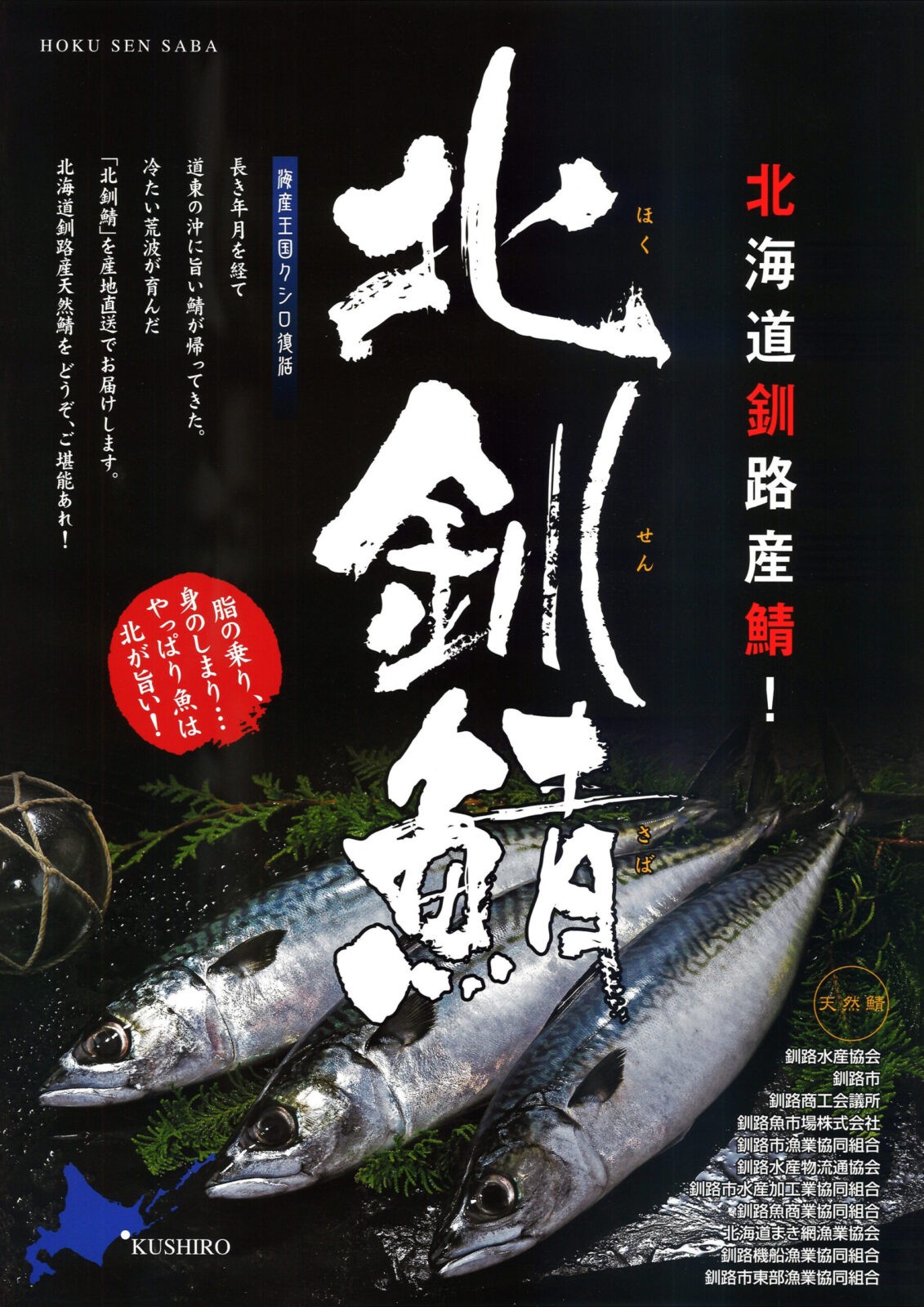
 Contact Us
Contact Us Get Listed!
Get Listed! Japanese
Japanese Privacy Policy
Privacy Policy
This has such a lot information. I’m glad I could read your article. This website’s style is ideal and the articles are great. Thanks :D